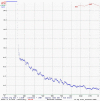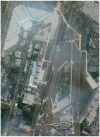Automatic Target Detection from Satellite Imagery Using Machine Learning
- PMID: 35161892
- PMCID: PMC8839603
- DOI: 10.3390/s22031147
Automatic Target Detection from Satellite Imagery Using Machine Learning
Abstract
Object detection is a vital step in satellite imagery-based computer vision applications such as precision agriculture, urban planning and defense applications. In satellite imagery, object detection is a very complicated task due to various reasons including low pixel resolution of objects and detection of small objects in the large scale (a single satellite image taken by Digital Globe comprises over 240 million pixels) satellite images. Object detection in satellite images has many challenges such as class variations, multiple objects pose, high variance in object size, illumination and a dense background. This study aims to compare the performance of existing deep learning algorithms for object detection in satellite imagery. We created the dataset of satellite imagery to perform object detection using convolutional neural network-based frameworks such as faster RCNN (faster region-based convolutional neural network), YOLO (you only look once), SSD (single-shot detector) and SIMRDWN (satellite imagery multiscale rapid detection with windowed networks). In addition to that, we also performed an analysis of these approaches in terms of accuracy and speed using the developed dataset of satellite imagery. The results showed that SIMRDWN has an accuracy of 97% on high-resolution images, while Faster RCNN has an accuracy of 95.31% on the standard resolution (1000 × 600). YOLOv3 has an accuracy of 94.20% on standard resolution (416 × 416) while on the other hand SSD has an accuracy of 84.61% on standard resolution (300 × 300). When it comes to speed and efficiency, YOLO is the obvious leader. In real-time surveillance, SIMRDWN fails. When YOLO takes 170 to 190 milliseconds to perform a task, SIMRDWN takes 5 to 103 milliseconds.
Keywords: SIMRDWN; SSD; YOLO; deep learning; faster RCNN; satellite images.
Conflict of interest statement
The authors declare no conflict of interest.
Figures













References
-
- Everingham M., Van Gool L., Williams C.K.I., Winn J., Zisserman A. The pascal visual object classes (VOC) challenge. Int. J. Comput. Vis. 2010;88:303–338. doi: 10.1007/s11263-009-0275-4. - DOI
-
- Sherrah J. Fully Convolutional Networks for Dense Semantic Labelling of High-Resolution Aerial Imagery. arXiv. 2016 preprint .1606.02585
-
- Liu W., Anguelov D., Erhan D., Szegedy C., Reed S., Fu C.-Y., Berg A.C. Lecture Notes in Computer Science (Including Subseries Lecture Notes in Artificial Intelligence and Lecture Notes in Bioinformatics) Springer; Berlin/Heidelberg, Germany: 2016. SSD: Single Shot MultiBox Detector; pp. 21–37. - DOI
MeSH terms
LinkOut - more resources
Full Text Sources

